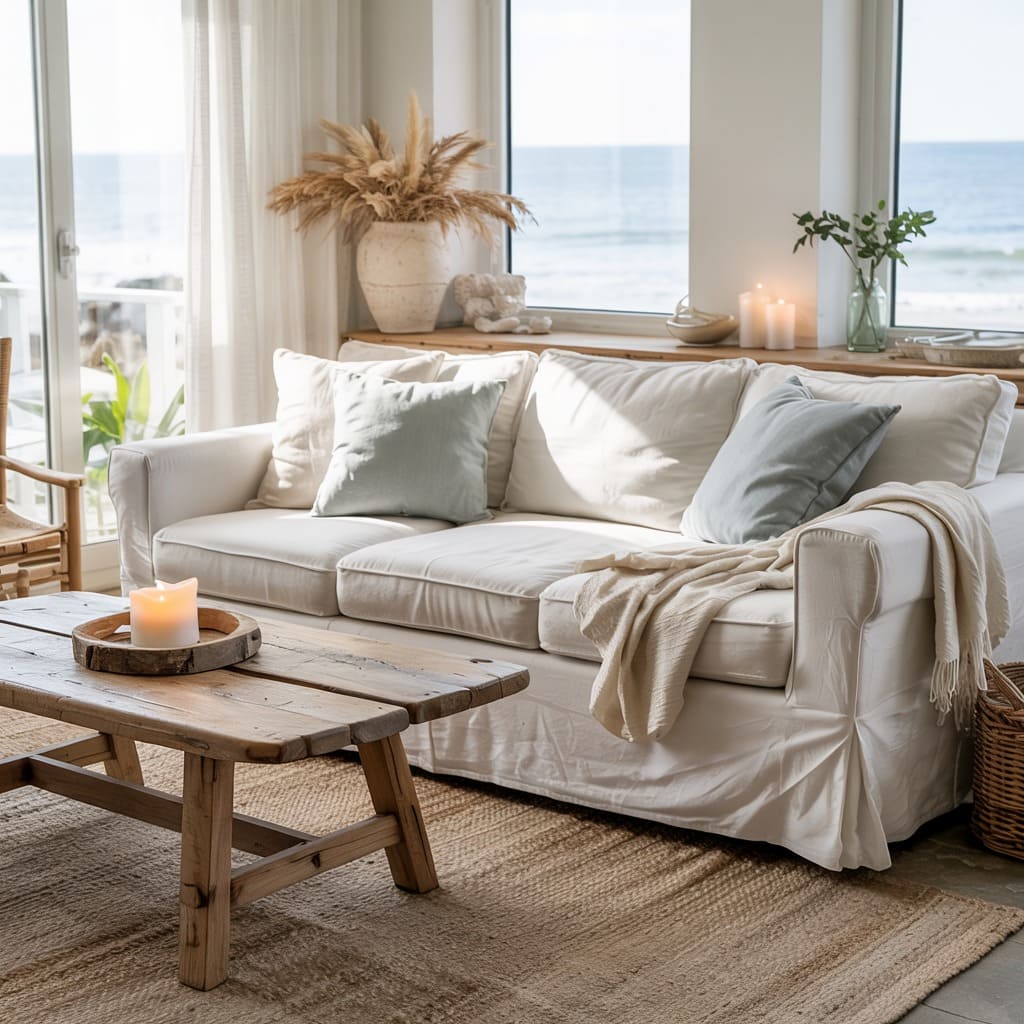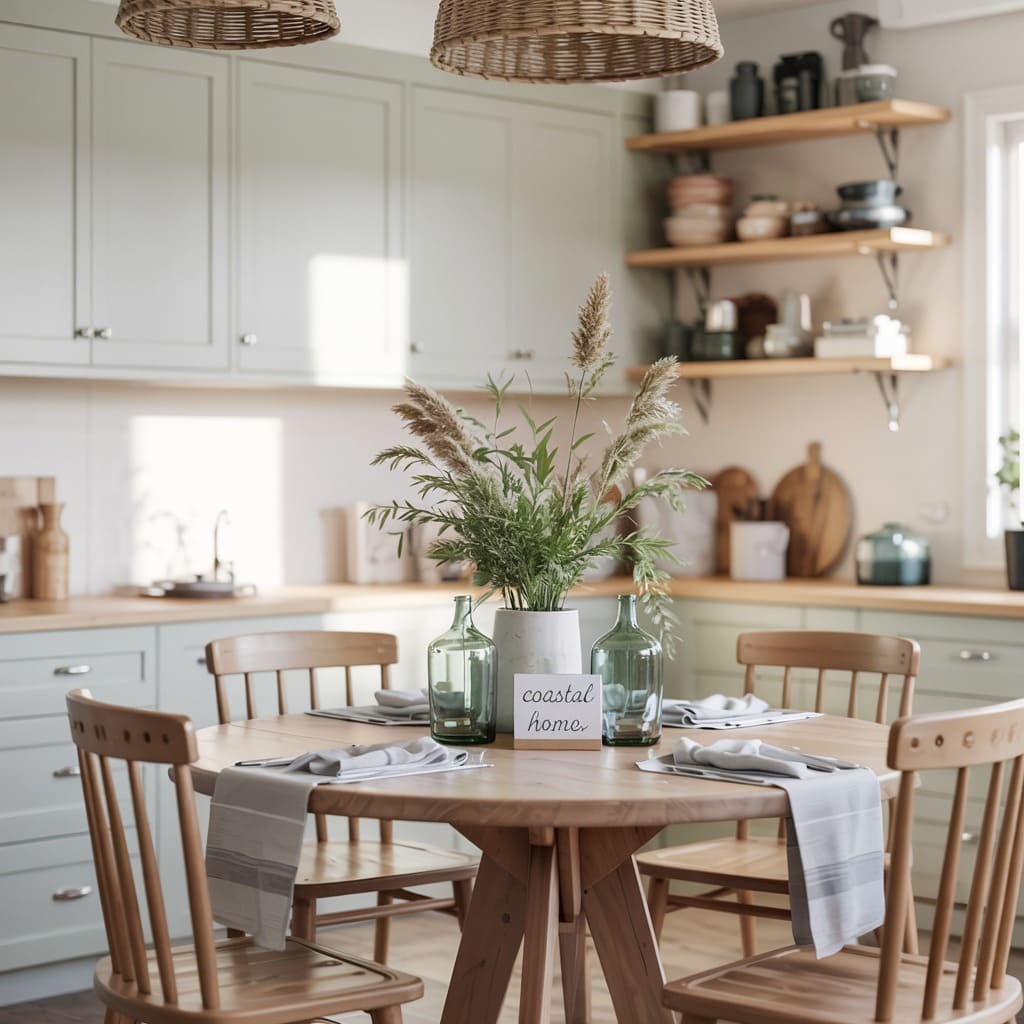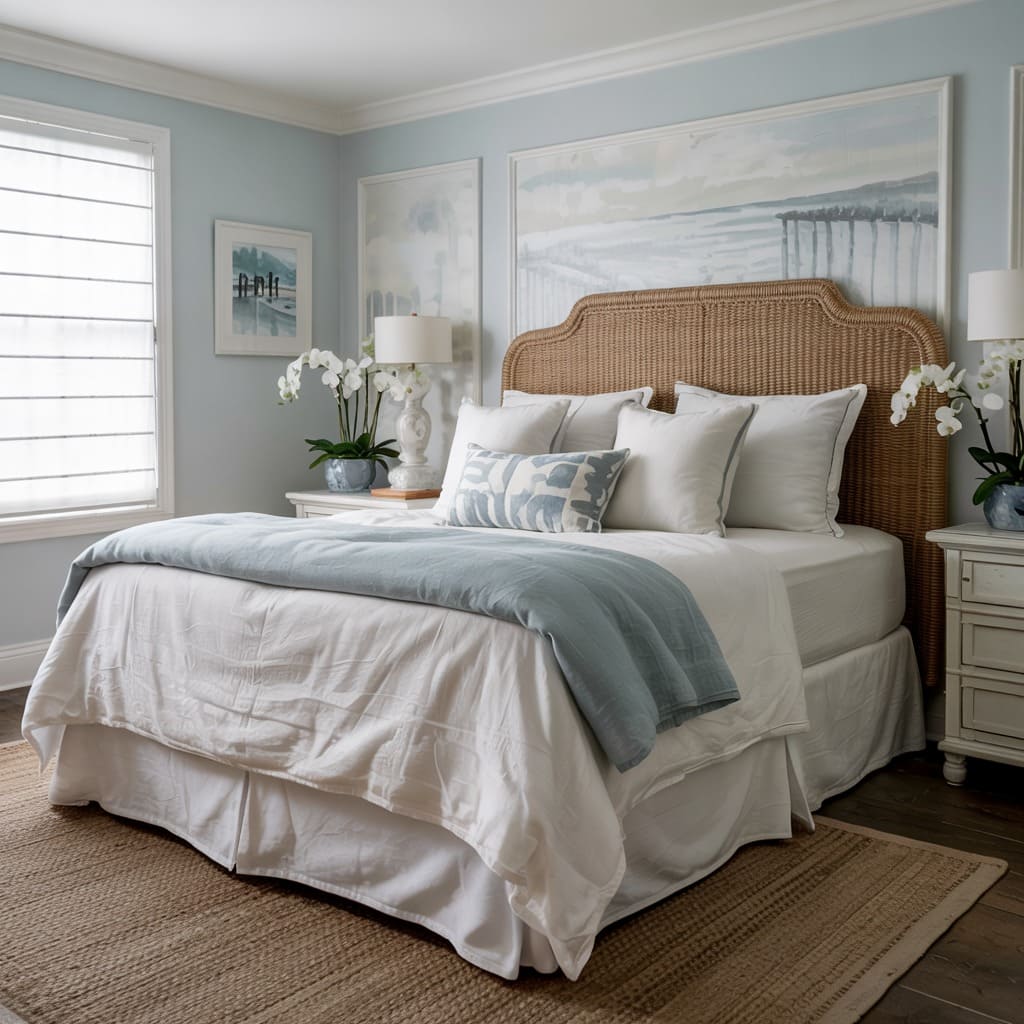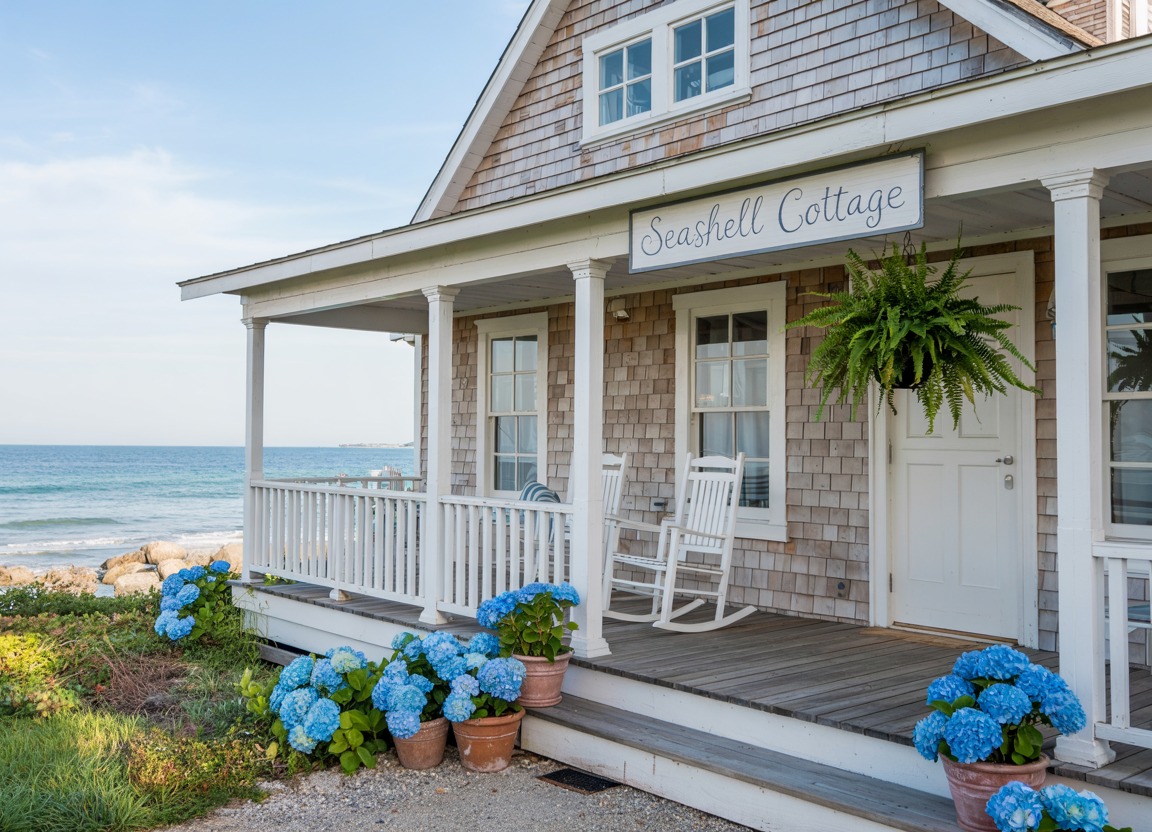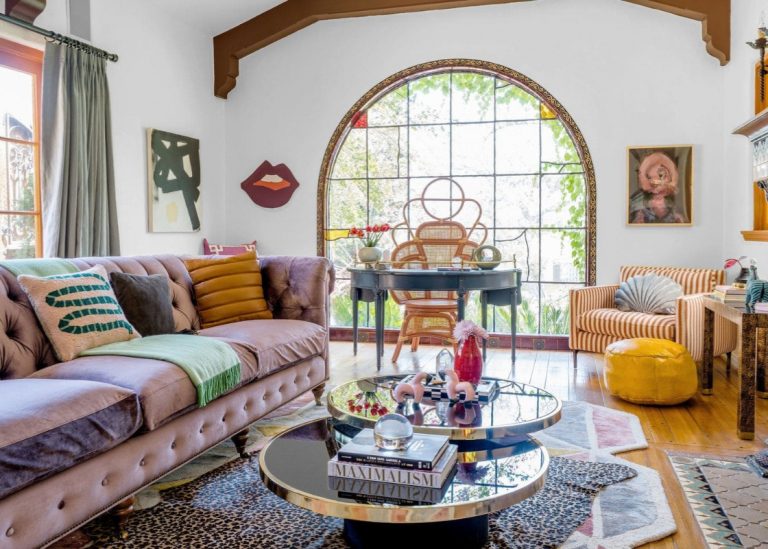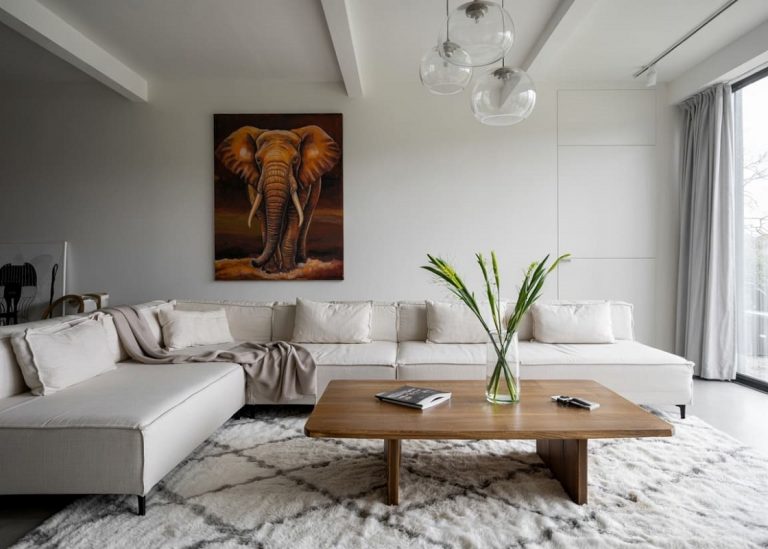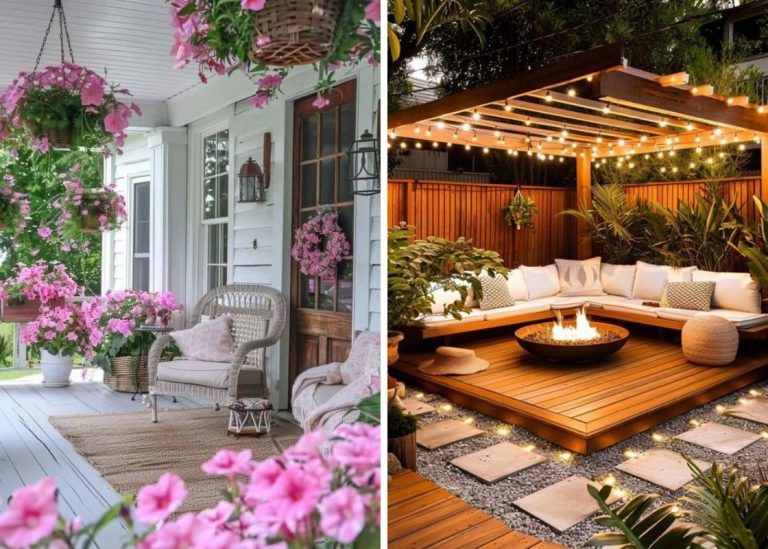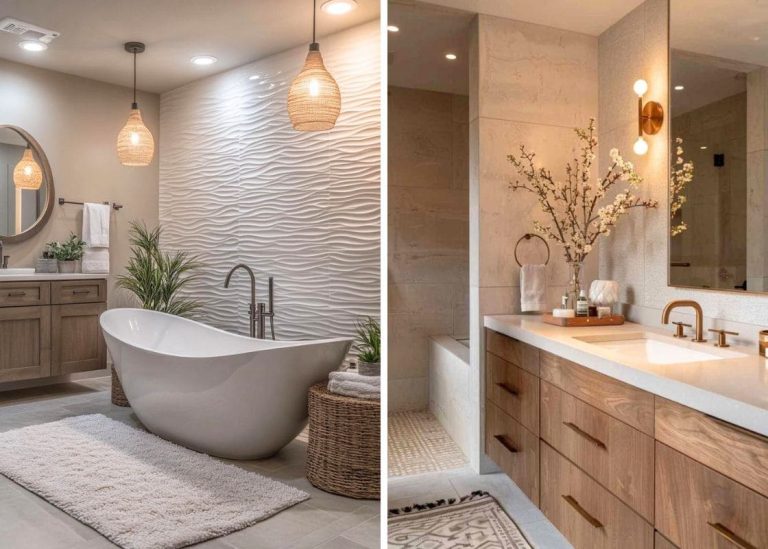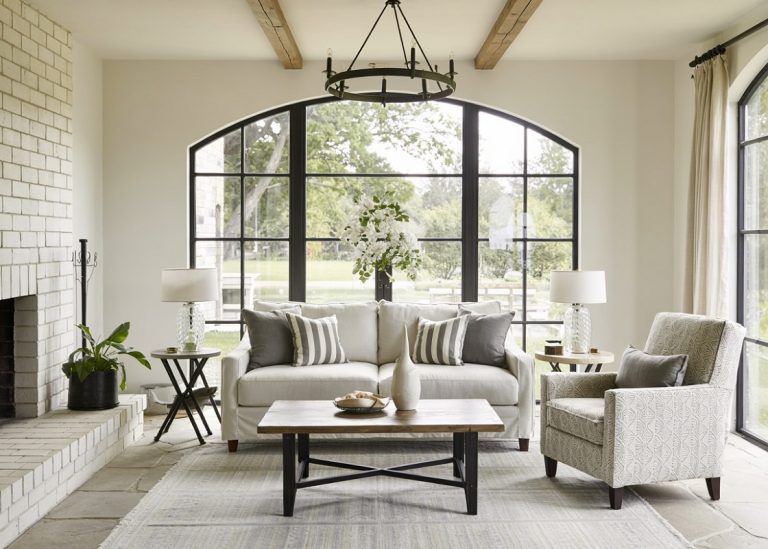How to Create a Coastal Home Without Living Near the Sea
A few summers ago, we spent a week in a tiny cottage along the Gulf Coast—me, my husband, our three kids, and what felt like all the sand in the world crammed into the backseat of our SUV. I remember sitting on the porch late at night, salt in the air, kids asleep inside, and my husband next to me, toes tucked in a woven throw, soft music playing from his phone. The breeze smelled like driftwood and sunshine, even after dark.
When we got home, I unpacked our suitcases—but I couldn’t unpack the feeling. That airy lightness. That open-window peace. That sense that nothing was cluttered, rushed, or heavy. I knew I wanted that feeling in our house—even though we live nowhere near the water.
And that’s how my quiet obsession with coastal home style began.
What Makes a Home Feel Coastal?
Coastal style is more about emotion than location. It’s the light, the softness, the way a room opens up and breathes with you. A coastal home whispers relax without saying a word. It welcomes bare feet, linen throws, and the comfort of space to exhale.
Here’s what you’ll often find in homes inspired by the coast:
- Color Palette: Whites, sandy beiges, sky blues, seafoam greens, and soft grays that mirror the beach and water.
- Natural Materials: Light woods, rattan, wicker, driftwood, jute, and rope details.
- Textures That Breathe: Linen, cotton, gauzy curtains, and weathered surfaces.
- Light, Light, Light: Open spaces, large windows, sheer drapes—rooms that invite the sun in and hold it gently.
- Uncluttered but Lived-In: Simple styling with thoughtful pieces—woven baskets, vintage bottles, coral finds, and handmade pottery.
Coastal style isn’t about decorating with seashells or anchors everywhere. It’s about creating a feeling of ease and sunlight—no matter how far you are from the sea.
A Home That Feels Like a Beach Day
One of my favorite coastal homes belongs to a couple I follow online who turned a fixer-upper in Kansas into what looks like a breezy cottage by the bay. I remember staring at the photos for too long, tracing the shape of the rattan pendant light over the kitchen island, the pale oak floors catching the morning sun, and the way every space seemed filled with quiet.
Front Porch and Entry
A wide white front door with vintage brass hardware sets the tone. Potted olive trees and a soft blue door mat offer just enough color. Inside, the entryway is clean and open with a bench in reclaimed wood, a simple woven runner, and a basket for beach hats—even if they’re only for decoration.
Living Room
Their living room is a gentle blend of whites and blue. A soft slipcovered sofa anchors the space, scattered with pale blue pillows. A driftwood coffee table sits on a chunky jute rug. On one side, long white curtains billow in the breeze from open windows, and there’s always a candle flickering—usually something that smells like coconut and salt air.
Kitchen and Dining
The kitchen glows with simplicity. Shaker-style cabinets in off-blue, brushed nickel pulls, open shelving with stacked ceramics, and woven pendant lights add charm without trying too hard. Their dining area? A round table with spindle-back chairs, linen napkins, and a centerpiece made of dried grass and sea-glass-colored vases. It feels like a long weekend with no schedule.
Bedrooms
The primary bedroom has soft blue-gray walls, white bedding, and a rattan headboard that brings texture without weight. It’s quiet in color but layered in feeling. The kids’ rooms use navy-and-white stripes, starfish prints, and soft rope baskets to add playful nods to the theme—without turning the rooms into a shipwreck of décor.
How to Bring Coastal Style Into Your Own Home
You don’t need a beach house to live like you’re always a few steps from the shore. Here are simple, heartfelt ways to invite coastal calm into any space:
1. Let Light Lead the Way
- Swap heavy drapes for light-filtering curtains or sheer linen panels.
- Add mirrors opposite windows to bounce light and open up tight spaces.
- Paint your walls a fresh white or soft neutral to reflect natural light.
2. Simplify With Texture
- Layer your space with jute rugs, cotton throws, and baskets in natural materials.
- Choose light-colored woods and soft finishes that feel weathered but cozy.
- Avoid anything shiny or overly polished—matte and tactile is the goal.
3. Bring the Outside In
- Add greenery like eucalyptus, snake plants, or small palms.
- Decorate with driftwood, shells in glass jars, or beach-colored ceramics.
- Use art that echoes the ocean—abstract waves, watercolors, or sandy paths.
4. Keep it Unfussy
- Choose fewer pieces that you truly love rather than filling shelves.
- Display objects that feel personal—a pebble from a vacation, a photo in the dunes, or a seashell from a family walk.
Final Thoughts
You don’t have to live near the sea to feel the joy of it. You just need to create space for light to move, for textures to breathe, and for the everyday to feel a little softer.
Some days I walk barefoot across our rug with a cup of chamomile tea, and I swear I can hear waves in the distance—even though it’s just the kids running upstairs.
What would your dream coastal room feel like? Would it smell like the sea or a soft summer breeze? Tell me—what’s one thing you’d add to your space to make it feel like your soul is somewhere peaceful and blue? Let’s dream together, one room at a time.



